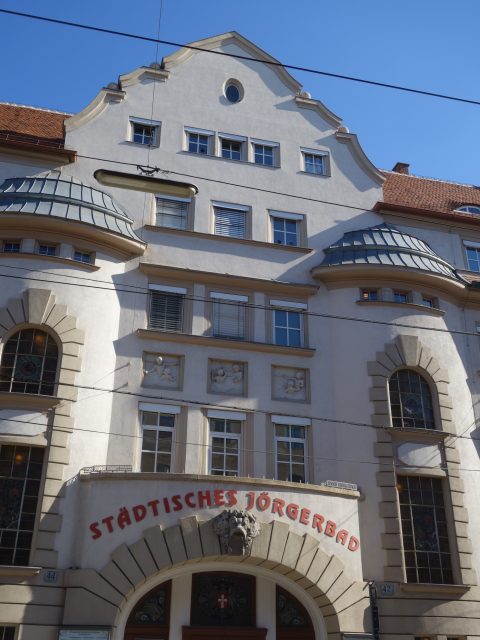“RED VIENNA” 1923-1933: SOCIAL WELFARE

Städtisches Jörgerbad, Vienna, public bath opened in 1914, built by Friedrich Jäckel, Heinrich Goldemund and Franz Wejmola
Three areas of social reform dominate the impressive and internationally renowned social policy of “Red Vienna”: communal social welfare, social housing and the Viennese cultural and educational policy. Mayor Karl Seitz together with the city councillors Hugo Breitner for Finance, Julius Tandler for Social Welfare and Otto Glöckel for Education started a huge reform project from 1923 to 1933 that was admired elsewhere. Breitner introduced a new tax system for Vienna that taxed people progressively according to their expenditure. A high tax was levied on “consumption of luxury and pleasure”, such as champagne, night clubs, dancing halls, horse-race betting or theatres. The proceeds from this new tax were used for building a new welfare and healthcare system and for constructing affordable and comfortable housing and schools. Several big community housing estates built during this time still exist, nowadays inhabited by tenants with a migration background as well as by indigenous Viennese. Many people, however, opposed this “housing construction tax” and Hugo Breitner was subject to very aggressive political attacks, partly with an anti-Semitic tendency.…
